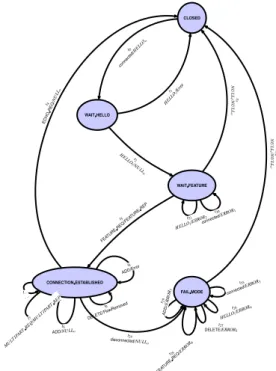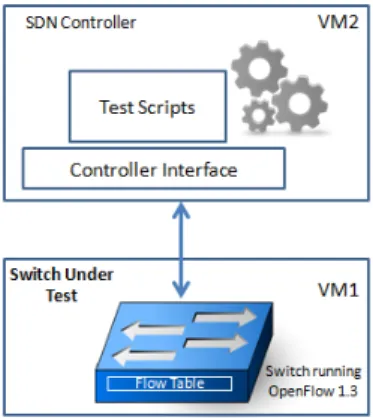Extended Finite State Machine based test generation for an OpenFlow switch
Texte intégral
Figure



Documents relatifs
This study aims to investigate and evaluate the relevance of test types - as they are administered nowadays in English as a foreign language - to the competency
The Final Focus Test Beam (FFTB) is a prototype linear collider final focus, designed to reduce the 46.6 GeV SLAC beam to a size of 2 microns by 60 nanometers.. The FFTB has
Table 2 shows, for each attack, the characteristics of the best generated defences (wrt. the fitness function as defined in Section 3.2 ): its clustering interval values, its size
Of course the peak corresponding to the 140 Ω discontinuity remains unchanged, while the peaks corresponding to the discontinuities behind the fault (from the source position)
As can be seen from the figure, change user steps is by far the greatest activity during creation, we see that changes in synchronization steps are equally important during
We conjecture that N-gram based test sequence generation will produce less infeasible test sequences (hence, higher coverage) than graph visit or random model traversal.. With these
Keywords: Software Product Lines, Test Configuration Generation, Search- Based Software Engineering, Mutation, Feature Models..
L’archive ouverte pluridisciplinaire HAL, est destinée au dépôt et à la diffusion de documents scientifiques de niveau recherche, publiés ou non, émanant des